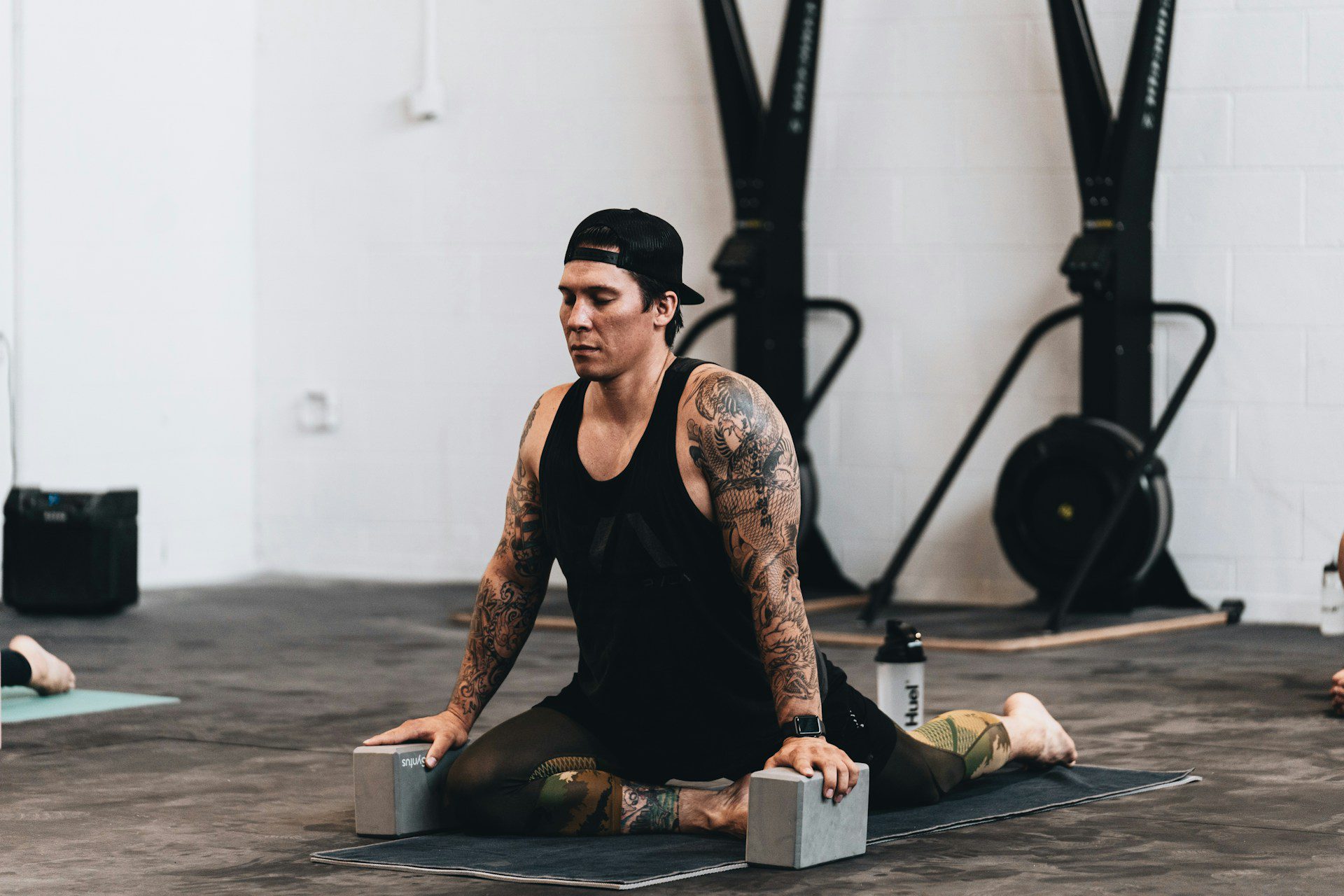When most people think of stretching, they immediately imagine touching their toes or doing a quick arm pull before a workout. But here’s the real deal: stretching isn’t just about becoming a human pretzel. It’s a secret weapon for anyone who wants to move better, feel better, and perform at their peak. Whether you’re a weekend warrior, a seasoned athlete, or just someone looking to keep their body agile, stretching offers more than just increased flexibility.
Stretching unlocks tight muscles, boosts circulation, primes your nervous system, and prepares your body to handle physical demands. Think of your body like a car—without proper warm-up and maintenance, it’s more likely to break down. Stretching acts as a dynamic tune-up that keeps your muscular engine purring smoothly. When done regularly and correctly, stretching can enhance muscle efficiency, coordination, and even mental clarity.
It also reduces tension built up from sitting all day or lifting weights, which can lead to muscle imbalances. These imbalances often result in pain or injury if left unchecked. Incorporating a thoughtful stretching routine into your daily or weekly plan can greatly enhance how your body performs under pressure—whether it’s lifting a barbell or chasing after your dog in the park.
The Science Behind Improved Performance Through Stretching
So what does science say about the connection between stretching and better performance? According to numerous studies, proper stretching routines can lead to measurable improvements in muscle elasticity and joint range of motion. That increased mobility translates into more efficient movements, less risk of injury, and better force production during high-intensity exercises.
Dynamic stretching, for instance, activates key muscle groups and stimulates blood flow. This prepares your body for explosive movements, such as sprinting or jumping, by increasing the elasticity of muscle fibers. On the flip side, static stretching (holding a stretch for 20-60 seconds) post-exercise can help muscles relax and return to their natural length, improving recovery.
Stretching also helps your brain connect better with your muscles. This neuromuscular coordination means your body becomes more responsive and balanced during complex movements. Whether you’re lifting heavy, swimming laps, or just walking up the stairs, better coordination means less strain and more gains.
Types of Stretching Techniques
Static Stretching
Static stretching involves holding a stretch in one position for a prolonged period, typically 20 to 60 seconds. It’s the go-to method post-exercise when the goal is relaxation and lengthening tight muscles. Common examples include hamstring stretches, quad pulls, and shoulder holds. This type of stretching is ideal for cooling down after a tough workout or improving flexibility over time.
While static stretching may not be best before intense workouts (as it can momentarily reduce muscle strength), it’s excellent for easing post-workout soreness and enhancing recovery. It also helps in gradually elongating muscles, promoting better posture and balance.
Dynamic Stretching
Dynamic stretching is all about movement. It involves controlled, smooth, and deliberate motions that take your muscles through their full range of motion. Think leg swings, arm circles, walking lunges, or torso twists. It’s ideal as a warm-up because it increases blood flow, elevates heart rate, and activates key muscles without overly taxing them.
Dynamic stretches are especially effective for athletes because they mimic the movements of the sport or activity being performed. For instance, a soccer player might do high knees and butt kicks, while a swimmer may perform arm swings and shoulder rolls.
PNF (Proprioceptive Neuromuscular Facilitation)
PNF stretching is a more advanced technique involving both stretching and contracting the targeted muscle group. Originally developed for rehabilitation, it’s now widely used to increase range of motion and strength. A typical PNF sequence includes an isometric contraction of the muscle, followed by a static stretch of that same muscle.
This technique often requires a partner or a therapist but can be modified for solo use with resistance bands. PNF is highly effective for athletes looking to break through flexibility plateaus or improve muscle control.
Ballistic Stretching
Ballistic stretching uses bouncing movements to push the body beyond its normal range of motion. While it may sound intense—and it is—it’s not recommended for most people unless you’re a trained athlete under supervision. Done incorrectly, ballistic stretching can increase the risk of muscle strain or tears.
However, when properly executed, it can be beneficial for sports that require rapid movements and explosive strength. The key is proper warm-up and progressive intensity to prevent injury.
Best Times to Stretch for Maximum Performance
Pre-Workout Stretching
Stretching before your workout is crucial, but you’ve got to do it the right way. That means skipping static stretches and focusing on dynamic ones. Dynamic stretches prepare your muscles and joints for movement by increasing temperature, heart rate, and neuromuscular readiness.
A solid pre-workout routine might include:
- Leg swings (forward/backward and side-to-side)
- Arm circles
- Walking lunges
- Hip openers
- Jumping jacks
The goal isn’t to exhaust yourself but to activate and engage muscles so they respond better during your workout. Dynamic stretching also helps improve balance, agility, and coordination—key components for athletes across all disciplines.
Post-Workout Stretching
After you’ve pushed your body, it’s time to cool it down. This is when static stretching shines. Holding poses for 20–60 seconds allows muscles to relax, return to their resting length, and begin the recovery process. It also helps flush out lactic acid and reduce next-day soreness.
Post-workout stretches should target the muscles you just worked. So if you hit leg day hard, focus on quads, hamstrings, and calves. If it was an upper-body session, stretch your chest, shoulders, and arms.
This period is also perfect for mindfulness and breathing, helping lower your heart rate and enter a recovery state faster.
Daily Mobility Routines
You don’t need to be working out to benefit from stretching. Incorporating daily mobility routines—especially after waking up or before bed—can significantly enhance flexibility, posture, and movement quality.
Morning routines help shake off stiffness and prepare you for the day, while evening routines relax your nervous system and promote better sleep. A consistent 10-minute stretch daily can make a noticeable difference in how your body feels and functions.
Stretching Routines for Different Types of Athletes
Runners
Runners are no strangers to tight hamstrings, stiff calves, and sore hips. Because running is a repetitive, high-impact activity, it can cause muscles to tighten and joints to become less mobile over time. A proper stretching routine can be a game changer for performance and longevity in running.
Dynamic stretches like high knees, leg swings, and walking lunges before a run help warm up muscles and increase joint range of motion. After a run, static stretches such as calf stretches against a wall, hamstring reaches, and hip flexor lunges can ease tension and aid recovery.
Key focus areas for runners include:
- Hamstrings
- Hip flexors
- Calves
- IT bands
- Glutes
Consistency is vital. Even just 10 minutes a day can make a massive difference in stride efficiency and injury prevention. Runners who stretch regularly often report improved pacing, longer endurance, and fewer setbacks from issues like shin splints or runner’s knee.
Weightlifters
Lifters, listen up! If you’re skipping your stretches, you’re leaving gains on the table. Stretching isn’t just for yogis—it’s a secret tool to lift more, recover faster, and stay injury-free.
Weightlifting can cause certain muscles (like the pecs, lats, or hip flexors) to become tight, leading to poor posture and reduced range of motion. This affects your form and limits your ability to engage the right muscles during lifts.
Pre-lift dynamic stretches—such as bodyweight squats, shoulder circles, or band pull-aparts—can activate the nervous system and prime the body. Post-lift static stretches for your shoulders, chest, hips, and hamstrings will lengthen muscles and reduce soreness.
Stretching also helps improve joint mobility, crucial for squats, deadlifts, and overhead presses. It’s about quality, not just quantity. A flexible lifter is often a stronger lifter, with better control and efficiency in every rep.
Yoga Practitioners
It might seem redundant to talk about stretching for yoga lovers—after all, yoga itself is often a stretching-focused discipline. But even yogis can benefit from targeted stretching routines that support their practice.
Yoga practitioners can enhance their flexibility and alignment by integrating mobility-focused movements outside traditional poses. Foam rolling before class can prepare the fascia and muscles, while static holds post-session can deepen flexibility in stubborn areas like the hips or thoracic spine.
Incorporating techniques like PNF stretching or using props like straps and blocks can also help achieve better alignment and safer execution of advanced poses. Stretching outside of yoga can balance out repetitive motions and prevent overuse injuries.
Swimmers and Cyclists
Swimmers and cyclists use specific muscle groups repetitively, making stretching critical to their performance and health. For swimmers, the shoulders, chest, and lats often become tight, affecting stroke efficiency. For cyclists, the hips, quads, and lower back take a beating from hours in a bent-over position.
Dynamic arm circles and torso twists help swimmers warm up pre-pool. Post-swim, static stretches like doorway pec stretches or triceps stretches can ease tension. Cyclists benefit from dynamic lunges and glute bridges before a ride, and stretches like the pigeon pose or seated hamstring stretch afterward.
Both athletes need to focus on maintaining balance between flexibility and stability. A stretching routine that addresses common tight spots ensures fluid movement and endurance without sacrificing joint integrity.
The Role of Stretching in Injury Prevention
How Stretching Helps Avoid Muscle Strain
Muscle strain is often caused by overexertion, improper movement, or tight muscles being forced beyond their limit. Regular stretching reduces these risks by improving muscle elasticity, allowing your body to move more freely and with less resistance.
When muscles are warm and supple, they can absorb impact and adapt to stress more effectively. This is crucial in sports and training, where sudden bursts of movement can lead to strains. For example, flexible hamstrings are less likely to tear during sprints, and mobile shoulders are less prone to rotator cuff issues in overhead lifts.
Stretching also promotes blood circulation, delivering oxygen and nutrients to tissues. This not only aids in muscle function but also speeds up the healing process after micro-injuries.
Enhancing Joint Health and Range of Motion
Healthy joints are the foundation of fluid, pain-free movement. Without regular movement and stretching, joints can become stiff, misaligned, or inflamed. Stretching supports joint health by:
- Improving synovial fluid circulation (the joint’s natural lubricant)
- Releasing pressure from tight muscles pulling on joints
- Increasing range of motion for better mechanical advantage
Whether it’s rotating the shoulders, flexing the hips, or twisting the spine, stretching encourages your joints to move in ways they were designed to. This reduces wear and tear and improves posture, balance, and coordination.
Athletes who incorporate stretching routines report fewer overuse injuries, less downtime, and greater overall mobility—essential for both short-term gains and long-term health.
Key Muscles to Focus On
Hamstrings and Hip Flexors
The hamstrings and hip flexors play a critical role in almost every lower-body movement, from walking and running to squatting and jumping. Yet, they’re also among the most commonly tight muscles, especially for people who sit for long hours.
Tight hamstrings limit your range of motion and can pull on your pelvis, leading to poor posture and lower back pain. Stretching them regularly improves flexibility, increases stride length for runners, and enhances overall mobility in squats and deadlifts. A few powerful hamstring stretches include:
- Standing toe touch
- Lying hamstring stretch with a resistance band
- Seated forward fold
On the other side, tight hip flexors are like an anchor dragging your hips forward, leading to anterior pelvic tilt. This misalignment can cause imbalances in movement and stress on your lower spine. To stretch your hip flexors effectively, try:
- Lunging hip flexor stretch
- Couch stretch
- Butterfly stretch
By targeting both muscle groups, you create better pelvic alignment, improved movement efficiency, and decreased risk of lower body injuries.
Shoulders and Neck
If you’ve ever felt tightness between your shoulder blades or stiffness in your neck after a long day, you’re not alone. These areas are major tension zones, especially in people who sit at desks or drive a lot. For athletes and gym-goers, the shoulders are crucial in lifts, throws, and most upper-body movements.
Stretching the shoulders and neck improves posture, reduces tension headaches, and enhances range of motion during overhead movements. Effective stretches include:
- Cross-body shoulder stretch
- Doorway chest opener
- Neck tilts and rotations
For those dealing with tech neck or rounded shoulders, daily stretching can bring noticeable relief. Stretching these areas also supports better blood flow to the brain, reducing mental fog and improving focus.
Calves and Ankles
Often neglected, the calves and ankles are foundational to balance, stability, and power. Tight calves can restrict ankle dorsiflexion, limiting your ability to squat properly, run efficiently, or perform explosive jumps.
Common calf stretches include:
- Wall push calf stretch
- Downward dog
- Elevated toe stretch on a step
Stretching your ankles helps reduce strain on the knees and hips by allowing more natural movement during walking, running, and lifting. Simple ankle circles and mobility drills can make a big difference in how grounded and powerful your lower body feels.
Lower Back and Core
Your core isn’t just your abs—it’s a complex group of muscles supporting your spine and stabilizing your torso. A strong, flexible core improves posture, balance, and power transfer in virtually every movement.
The lower back, in particular, is prone to tightness and strain from poor posture or lifting mechanics. Stretching the lower back can relieve pressure on the spine and ease chronic discomfort.
Some excellent stretches for these areas include:
- Child’s pose
- Supine spinal twist
- Cat-cow stretch
- Cobra stretch
Incorporating core mobility and back flexibility work helps you maintain a healthy spine, reduce the risk of injury, and move more freely in both workouts and everyday life.
Sample Stretching Routines for Peak Performance
10-Minute Pre-Workout Stretch
Before diving into any high-intensity workout, it’s essential to prime your body with a dynamic warm-up. This 10-minute pre-workout stretch activates your muscles, increases heart rate, and preps your nervous system for action.
Routine:
- Arm Circles – 1 minute (30 seconds each direction)
- Leg Swings – 1 minute (front to back, then side to side)
- Torso Twists – 1 minute
- High Knees – 1 minute
- Walking Lunges with a Twist – 2 minutes
- Hip Circles – 1 minute
- Jumping Jacks or Skips – 3 minutes
This series gets blood flowing, opens up the joints, and activates the major muscle groups. It’s a must for any athlete who wants to reduce injury risk and perform at their best.
15-Minute Cool-Down Stretch Routine
Post-workout stretching aids recovery, reduces soreness, and helps muscles relax. This 15-minute cool-down routine combines static stretches targeting the most commonly worked areas.
Routine:
- Hamstring Stretch (Seated or Standing) – 2 minutes
- Quad Stretch (Standing) – 2 minutes
- Hip Flexor Stretch (Kneeling Lunge) – 2 minutes
- Calf Stretch (Wall or Step) – 2 minutes
- Child’s Pose – 2 minutes
- Shoulder Stretch (Cross-Arm or Doorway) – 2 minutes
- Neck Rolls and Side Stretches – 3 minutes
This is the perfect way to end a workout and transition your body into recovery mode. Breathing deeply during each stretch enhances relaxation and helps flush toxins.
Daily Full-Body Stretch Routine
Even if you’re not working out, doing a daily full-body stretch is one of the best habits you can develop. It improves circulation, posture, and mobility, and can be done in just 15 minutes.
Routine:
- Neck Tilts and Rotations – 2 minutes
- Shoulder Rolls and Arm Cross Stretch – 2 minutes
- Torso Twist and Side Bends – 2 minutes
- Forward Fold and Seated Hamstring Stretch – 2 minutes
- Butterfly and Pigeon Pose – 2 minutes
- Lying Spinal Twist – 2 minutes
- Downward Dog to Cobra Flow – 3 minutes
This sequence works every major joint and muscle group. It’s a great way to start or end the day, improve body awareness, and maintain lifelong mobility.
Common Stretching Mistakes to Avoid
Overstretching and Its Risks
Believe it or not, there is such a thing as too much stretching. Overstretching can actually harm your muscles, joints, and tendons. When you push beyond your body’s natural limits, you risk tearing muscle fibers, causing joint instability, or even nerve irritation.
People often fall into the trap of thinking more is better—holding stretches too long or pushing deeper into painful positions. But pain is not gain when it comes to stretching. Discomfort is normal, but sharp pain is a warning sign. Always stretch to the point of mild tension, not agony.
Another risk? Overstretching can lead to hypermobility, where joints become overly loose and unstable. This may seem like a good thing for flexibility, but it can increase the likelihood of dislocations, sprains, and joint wear over time.
The fix? Always listen to your body. Warm up before stretching, increase intensity gradually, and never force a movement. Balance stretching with strength training to maintain joint support and control.
Improper Form and Timing
Stretching is only as effective as your technique. Poor form can do more harm than good, placing stress on the wrong muscles and leading to imbalance or injury. Common errors include:
- Rounding the back in hamstring stretches
- Overarching the spine in backbends
- Letting knees cave in during seated stretches
To avoid this, focus on posture and alignment. Use mirrors, ask a coach for feedback, or follow guided videos to perfect your form. Keep movements slow and controlled, breathing deeply to support muscle relaxation.
Timing matters too. Doing static stretches before a high-intensity workout can temporarily reduce muscle strength and performance. Save those for after your workout. Before training, dynamic stretching is the way to go.
Ultimately, stretching with proper form and at the right time ensures that you reap all the benefits—improved flexibility, better performance, and reduced injury risk.
Tools and Equipment to Enhance Stretching
Foam Rollers
Foam rollers are your best friends for loosening tight muscles and enhancing stretching. This tool works through a technique called self-myofascial release (SMR), which targets the fascia—the connective tissue around your muscles. By rolling out sore spots, you can break up adhesions, improve blood flow, and prepare muscles for deeper stretching.
Use foam rollers before or after your workout to target:
- Quads and hamstrings
- Glutes and calves
- Upper back and lats
Start with light pressure and gradually increase as your tissues adapt. Combine foam rolling with stretching for superior flexibility gains and muscle recovery.
Resistance Bands
Resistance bands aren’t just for strength training—they’re amazing for assisted stretching too. They help you reach deeper into stretches without overstraining and offer support for hard-to-reach muscle groups.
Examples of great band-assisted stretches:
- Hamstring stretch lying down
- Shoulder and chest opener
- Seated straddle stretch with a band for support
They’re especially useful for people with limited mobility or recovering from injury. Portable and affordable, bands are a must-have tool in your stretching arsenal.
Stretching Apps and Timers
Staying consistent with your stretching routine can be tough—enter stretching apps and timers. These tools guide you through routines, ensure proper timing, and keep your form in check with visual and audio cues.
Top apps offer:
- Customizable stretch plans
- Voice instructions
- Reminders for daily sessions
- Integration with fitness trackers
Using a timer helps you avoid rushing through stretches or holding them too long. Just set it for 30-60 seconds per stretch, and stay focused on your form and breathing.
Technology can make stretching smarter and more effective. Whether you’re a beginner or a seasoned athlete, these tools keep you accountable and enhance your results.
Integrating Stretching Into Your Fitness Plan
Creating a Balanced Weekly Stretching Plan
Stretching should be more than an afterthought—it deserves its own place in your fitness calendar. A well-rounded weekly plan includes:
- Daily mobility work (5–10 minutes)
- Pre-workout dynamic stretching (before every session)
- Post-workout static stretching (after every session)
- Deep stretch or yoga session (1–2 times a week)
This balanced approach ensures that all muscle groups get attention without overdoing it. Customize based on your activity level, goals, and body areas that feel the tightest.
Don’t just stretch what feels sore—stretch what’s weak or underused too. A routine that addresses both tightness and imbalances will boost your performance in everything from lifting to sports to everyday movement.
Tracking Progress and Flexibility Gains
Seeing progress keeps you motivated, and tracking flexibility is easier than you think. Here’s how to do it:
- Take before-and-after photos in key stretches (like a forward fold or split)
- Use apps that log your sessions and improvements
- Test range of motion monthly (e.g., how far you can reach during a toe touch)
- Journal how your body feels after each stretch session
Celebrate small wins—like being able to touch your toes or hold a stretch longer. These gains reflect improved muscle function, joint health, and body awareness.
Over time, consistent stretching not only makes you feel better but also enhances every other part of your fitness journey. It’s like adding oil to a machine—it makes all the moving parts work better together.
Benefits Beyond the Gym
Stretching for Better Sleep
Struggling to fall asleep or stay asleep? A few simple stretches before bed might be your secret weapon. When done right, stretching calms your nervous system, reduces physical tension, and prepares your body for rest. It’s like telling your brain, “Hey, it’s time to slow down now.”
Gentle static stretches and yoga poses stimulate the parasympathetic nervous system—the “rest and digest” mode that helps you unwind. Pair these with deep breathing, and you’ll find yourself dozing off more easily and waking up less often during the night.
Great bedtime stretches include:
- Seated forward fold
- Legs-up-the-wall pose
- Child’s pose
- Supine spinal twist
Add a short routine like this to your wind-down ritual, and you’ll feel a difference—not just in sleep quality but in how refreshed and limber you feel in the morning.
Reducing Stress and Tension
Stretching doesn’t just release tight muscles—it releases emotional tension too. Physical stress often settles into the body as muscle tightness, especially in the shoulders, neck, and lower back. Stretching encourages blood flow and oxygen delivery to these areas, helping the body process and let go of stress.
By focusing on slow movements and breath control, stretching acts as a moving meditation. It shifts your focus from worries and overthinking to how your body feels. This presence in the moment reduces cortisol (the stress hormone) and boosts feel-good endorphins.
Try setting aside 10–15 minutes daily to stretch while listening to calming music or nature sounds. You’ll not only improve your mobility but also support your mental well-being.
Stretching for All Ages
Stretching for Kids and Teen Athletes
Kids and teens are naturally more flexible than adults, but that doesn’t mean they can skip stretching—especially if they’re active in sports or high-energy play. Proper stretching supports their growing bodies, reduces injury risk, and builds lifelong movement habits.
Dynamic warm-ups are great for pre-sport activities, while post-game stretches help muscles recover. Make it fun with playful stretches like animal movements or yoga-inspired poses to keep younger children engaged.
Stretching teaches body awareness, patience, and discipline—all valuable traits for young athletes. Just remember: don’t push kids too far. Their bodies are still developing, and flexibility gains should come naturally with consistent practice.
Safe Stretching for Seniors
Aging brings natural changes like decreased joint flexibility, muscle stiffness, and balance issues. Regular stretching can counteract these effects and support independence and mobility in later years.
For seniors, the goal is gentle, consistent movement. Focus on:
- Neck and shoulder rolls
- Seated hamstring stretches
- Ankle and wrist circles
- Standing side bends
- Gentle back twists
These movements enhance circulation, reduce arthritis stiffness, and improve daily function. Always prioritize comfort and stability—use chairs or walls for support as needed. For seniors, stretching is more than just mobility—it’s freedom, confidence, and quality of life.
Expert Opinions and Research on Stretching
What Sports Scientists Say
Sports scientists agree that stretching, when done appropriately, is a powerful tool for enhancing athletic performance and preventing injury. Numerous studies confirm that dynamic stretching before exercise improves power output, muscle activation, and agility.
Meanwhile, static stretching post-exercise helps with muscle recovery and maintaining flexibility. However, they caution against overdoing it or using stretching as a one-size-fits-all solution. The key takeaway from the research: tailor your stretching routine to your activity type, goals, and individual needs.
The consensus is clear—stretching, especially when combined with strength and mobility training, leads to a healthier, more functional body.
Athletic Coaches’ Recommendations
Ask any high-level coach, and they’ll tell you: stretching isn’t optional—it’s essential. From Olympic athletes to NFL stars, stretching is part of every elite training plan.
Coaches emphasize:
- Warm-up with dynamic movement, not static holds
- Cool down with targeted static stretches
- Prioritize problem areas like hips, shoulders, and hamstrings
- Use tools like bands and foam rollers for deeper work
Most importantly, they stress consistency. It’s not about doing the splits—it’s about moving better, recovering faster, and staying in the game longer. Stretching is a long-term investment in your body’s ability to perform under pressure.
Conclusion
Stretching is far more than a pre-gym ritual—it’s a foundational practice for anyone who values performance, longevity, and well-being. From improving flexibility and mobility to enhancing sleep and reducing stress, the benefits are wide-reaching and undeniable.
Whether you’re an athlete, a weekend warrior, or someone just looking to move with less pain and more ease, stretching should be part of your daily life. The key is doing it consistently, using the right techniques, and listening to your body.
You don’t need fancy equipment or an hour a day. Just 10–15 minutes of smart stretching can transform how you feel, move, and perform. So roll out your mat, take a deep breath, and give your body the attention it deserves.
FAQs
How long should I stretch each day?
Ideally, aim for at least 10 to 15 minutes of stretching daily. If you’re active or working out, add dynamic stretching pre-workout and static stretching post-workout for the best results.
Is stretching every day too much?
Not at all—daily stretching is encouraged! Just be sure to listen to your body and avoid overstretching. Consistency, not intensity, is key.
Can I stretch without working out?
Absolutely. Stretching is beneficial on rest days or even on its own. It helps with flexibility, circulation, and stress relief, regardless of workout frequency.
What’s the best type of stretching for beginners?
Start with static and dynamic stretching. Static stretches (like toe touches or quad stretches) are great post-workout, while dynamic stretches (like leg swings) are ideal for warming up.
Should I feel pain while stretching?
No. Stretching should create a gentle tension, not pain. If you feel sharp or intense discomfort, ease off immediately to avoid injury.








